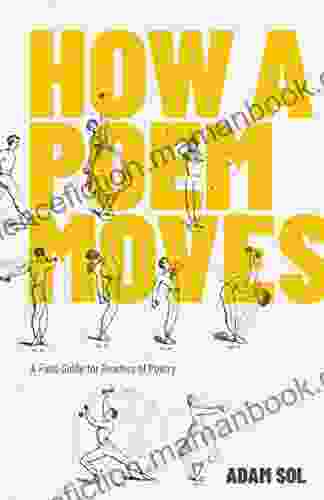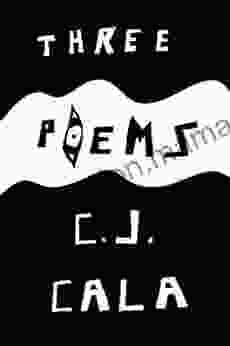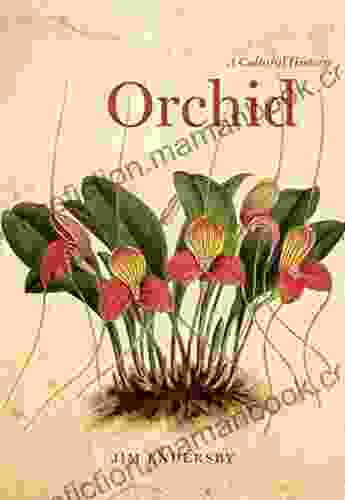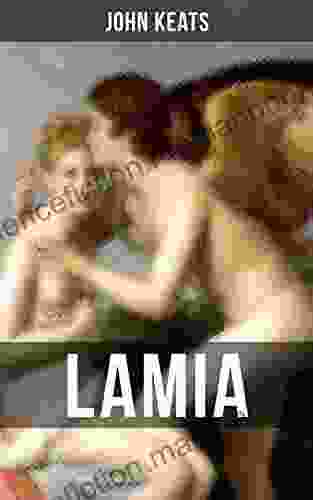A Comprehensive Field Guide for Readers of Poetry: Uncovering the Hidden Treasures of Verse

Poetry, an art form as old as civilization itself, has captivated the hearts and minds of countless individuals throughout time. Its ability to evoke emotions, paint vivid imagery, and challenge our perspectives makes it a truly transformative and enriching experience. However, for many, understanding and appreciating poetry can seem like a daunting task. This field guide aims to serve as a comprehensive resource for readers of all levels, providing essential insights, tools, and techniques to unlock the hidden treasures of verse.
Before delving into the depths of poetic interpretation, it is crucial to grasp the fundamental elements that constitute a poem. These elements include:
Form: This refers to the overall structure and pattern of a poem, including its meter, rhyme scheme, and stanza length.
4.6 out of 5
| Language | : | English |
| File size | : | 3582 KB |
| Text-to-Speech | : | Enabled |
| Screen Reader | : | Supported |
| Enhanced typesetting | : | Enabled |
| Word Wise | : | Enabled |
| Print length | : | 216 pages |
Language: Poetry often employs figurative language, such as metaphors, similes, and personification, to create vivid imagery and convey emotions.
Imagery: The sensory experiences and mental pictures evoked by the poet's words, transporting the reader to other worlds and realms.
Sound: The rhythm, rhyme, and intonation of the poem's language can create musical effects that enhance its emotional impact.
Theme: The central idea or message that the poet seeks to convey through the poem.
When approaching a poem, it is essential to avoid the temptation of seeking a single, definitive interpretation. Poetry is often open to multiple perspectives and interpretations, and the reader's own experiences and perspectives will influence how they perceive the work. However, there are some general guidelines that can help readers navigate the complexities of poetic meaning:
Context: Consider the poet's background, the historical and cultural context in which the poem was written, and any other relevant information that may provide insight into its interpretation.
Close Reading: Pay close attention to the words, phrases, and symbols used by the poet, and examine how they interact and contribute to the poem's overall meaning.
Figurative Language: Identify the use of metaphors, similes, and other figures of speech, and explore how they enhance the poem's imagery and significance.
Sound Devices: Analyze the rhythm, rhyme, and intonation of the poem, and consider how they contribute to its emotional impact.
Personal Response: Allow your own thoughts, feelings, and experiences to inform your interpretation, and consider how the poem resonates with you on a personal level.
Beyond the mechanics of interpretation, there are countless ways to appreciate the beauty and transformative power of poetry. Here are a few suggestions:
Read Aloud: Reading poetry aloud can enhance your appreciation of its musicality, rhythm, and emotional impact.
Attend Poetry Readings: Listening to poets read their work can provide valuable insights into their intentions and interpretations.
Join a Poetry Club: Discussing poetry with others can enrich your understanding and deepen your appreciation.
Write Your Own Poetry: Experimenting with writing poetry can help you develop a deeper understanding of the art form and its challenges.
For teachers and students of poetry, here are some additional tips:
Engage with Different Voices: Expose students to a diverse range of poetic voices, including poets from various backgrounds, cultures, and time periods.
Promote Active Reading: Encourage students to engage with the text through close reading, discussion, and creative responses.
Foster a Creative Environment: Provide opportunities for students to explore their own creativity through poetry writing and performance.
Navigating the world of poetry can be an exhilarating and rewarding journey. Armed with the tools and techniques outlined in this field guide, readers of all levels can unlock the hidden treasures of verse, gaining a deeper appreciation for the art form's beauty, power, and enduring impact. Remember, the true joy of poetry lies not in seeking absolute interpretations, but in embracing the richness and diversity of perspectives that it offers.
:
Navigating the intricacies of poetry through an immersive field guide with expert guidance and insights for unlocking the beauty and power of verse.
4.6 out of 5
| Language | : | English |
| File size | : | 3582 KB |
| Text-to-Speech | : | Enabled |
| Screen Reader | : | Supported |
| Enhanced typesetting | : | Enabled |
| Word Wise | : | Enabled |
| Print length | : | 216 pages |
Do you want to contribute by writing guest posts on this blog?
Please contact us and send us a resume of previous articles that you have written.
 Top Book
Top Book Novel
Novel Fiction
Fiction Nonfiction
Nonfiction Literature
Literature Paperback
Paperback Hardcover
Hardcover E-book
E-book Audiobook
Audiobook Bestseller
Bestseller Classic
Classic Mystery
Mystery Thriller
Thriller Romance
Romance Fantasy
Fantasy Science Fiction
Science Fiction Biography
Biography Memoir
Memoir Autobiography
Autobiography Poetry
Poetry Drama
Drama Historical Fiction
Historical Fiction Self-help
Self-help Young Adult
Young Adult Childrens Books
Childrens Books Graphic Novel
Graphic Novel Anthology
Anthology Series
Series Encyclopedia
Encyclopedia Reference
Reference Guidebook
Guidebook Textbook
Textbook Workbook
Workbook Journal
Journal Diary
Diary Manuscript
Manuscript Folio
Folio Pulp Fiction
Pulp Fiction Short Stories
Short Stories Fairy Tales
Fairy Tales Fables
Fables Mythology
Mythology Philosophy
Philosophy Religion
Religion Spirituality
Spirituality Essays
Essays Critique
Critique Commentary
Commentary Glossary
Glossary Bibliography
Bibliography Index
Index Table of Contents
Table of Contents Preface
Preface Introduction
Introduction Foreword
Foreword Afterword
Afterword Appendices
Appendices Annotations
Annotations Footnotes
Footnotes Epilogue
Epilogue Prologue
Prologue Taylor Sapp
Taylor Sapp Joosr
Joosr Angelo Giallombardo
Angelo Giallombardo Don Lattin
Don Lattin Elizabeth Hickey
Elizabeth Hickey Alfred Tennyson
Alfred Tennyson J H Leigh
J H Leigh Mary Diyon
Mary Diyon Martin Heidegger
Martin Heidegger William A Owings
William A Owings David Podlipny
David Podlipny Anton Chekhov
Anton Chekhov Sarah Steele
Sarah Steele Eugene Gold
Eugene Gold Garous Abdolmalekian
Garous Abdolmalekian Lena Greiner
Lena Greiner Erin Lowry
Erin Lowry Thomas Armstrong
Thomas Armstrong Kimberley Payne
Kimberley Payne Terry Carter
Terry Carter
Light bulbAdvertise smarter! Our strategic ad space ensures maximum exposure. Reserve your spot today!
 Luke BlairFollow ·15.9k
Luke BlairFollow ·15.9k Braden WardFollow ·7.8k
Braden WardFollow ·7.8k José MartíFollow ·3.9k
José MartíFollow ·3.9k Ethan GrayFollow ·11.1k
Ethan GrayFollow ·11.1k Felix CarterFollow ·6.8k
Felix CarterFollow ·6.8k Keith CoxFollow ·17.9k
Keith CoxFollow ·17.9k Chase SimmonsFollow ·7.6k
Chase SimmonsFollow ·7.6k Giovanni MitchellFollow ·10k
Giovanni MitchellFollow ·10k

 Ashton Reed
Ashton ReedClean(ish) Food for People Who Like to Eat Dirty
By: [Your Name] Are...
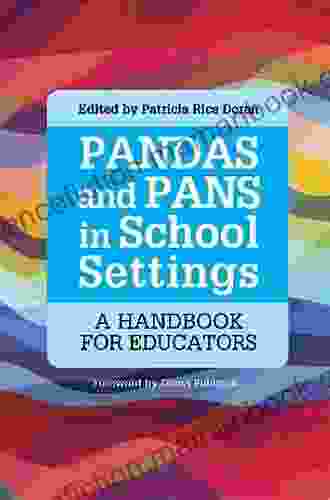
 Ronald Simmons
Ronald SimmonsThe Handbook for Educators: A Comprehensive Guide to...
The Handbook for...

 Derrick Hughes
Derrick HughesAny Place Hang My Hat: A Hauntingly Beautiful Novel by...
A Masterpiece of...
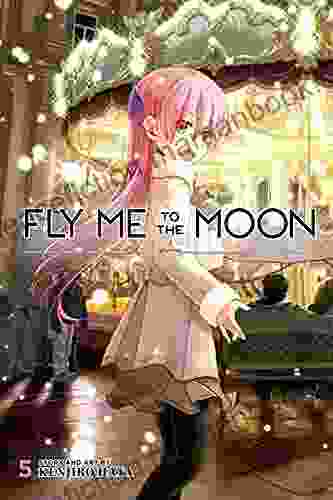
 Adrien Blair
Adrien BlairFly Me to the Moon Vol. 5: A Lunar Odyssey through...
In the vast...
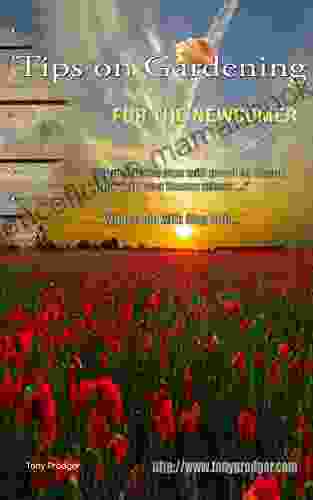
 William Powell
William PowellTips By Gardeners On Variety Of Subjects
Gardening...
4.6 out of 5
| Language | : | English |
| File size | : | 3582 KB |
| Text-to-Speech | : | Enabled |
| Screen Reader | : | Supported |
| Enhanced typesetting | : | Enabled |
| Word Wise | : | Enabled |
| Print length | : | 216 pages |


